- Thực hiện siêu nhanh: Các giao dịch diễn ra nhanh hơn bất kỳ con người nào có thể thực hiện — thường với sự hỗ trợ của các thuật toán tự động.
- Khối lượng cao: Có thể thực hiện hàng nghìn giao dịch trong một giây.
- Lợi nhuận nhỏ trên mỗi giao dịch: Mỗi giao dịch nhằm tạo ra lợi nhuận nhỏ (khoảng 0,01–0,05%), nhưng tổng lợi nhuận có thể đáng kể do số lượng giao dịch rất lớn.
- Thời gian nắm giữ ngắn: Các vị thế thường được giữ trong vài phần của một giây, không phải hàng giờ hay hàng ngày.
- Yêu cầu cơ sở hạ tầng mạnh mẽ: Bao gồm kết nối trực tiếp đến các sàn giao dịch, máy chủ đặt tại cùng vị trí và thuật toán được xây dựng riêng.
Pocket Option Giao Dịch Tần Suất Cao: Khả Năng và Giới Hạn

Giao dịch tần suất cao (HFT) thường được liên kết với các nhà đầu tư tổ chức sử dụng thuật toán tiên tiến để đặt hàng nghìn giao dịch trong vài mili giây. Pocket Option không cung cấp cơ sở hạ tầng HFT thực sự -- nhưng nó cung cấp các công cụ thực hiện nhanh có thể hữu ích cho các nhà giao dịch bán lẻ muốn triển khai các chiến lược nhịp độ nhanh ⚡
Giao dịch tần suất cao (HFT) là gì?
Giao dịch tần suất cao (HFT) là phương pháp giao dịch dựa trên công nghệ, trong đó số lượng lớn lệnh được đặt với tốc độ cực kỳ cao, thường là trong khoảng thời gian micro giây hoặc mili giây. Phương pháp này chủ yếu được sử dụng bởi các quỹ đầu tư phòng hộ, ngân hàng đầu tư và các công ty chuyên biệt để tận dụng những biến động giá nhỏ trên thị trường tài chính.
Hãy phân tích chi tiết:
✔️ Đặc điểm cơ bản của HFT:
Tại sao các tổ chức sử dụng HFT:
- Để khai thác những bất hiệu quả nhỏ trước tất cả mọi người.
- Để cung cấp thanh khoản (như các nhà tạo lập thị trường liên tục mua và bán).
- Để phản ứng tức thì với tin tức hoặc sự kiện kinh tế.
- Để thực hiện chênh lệch giá — ví dụ, mua một tài sản trên một sàn giao dịch và bán ngay lập tức trên một sàn khác với mức chênh lệch giá nhỏ.
Tại sao HFT không dành cho tất cả mọi người
Hệ thống HFT tốn kém và phức tạp. Một công ty HFT điển hình có thể chi hàng triệu đô la cho công nghệ và cơ sở hạ tầng. Đó là lý do tại sao các nhà giao dịch nhỏ lẻ thường không có quyền truy cập vào HFT thực sự — chi phí, tốc độ và chuyên môn cần thiết vượt xa nhu cầu trung bình.
Giao dịch nhanh trên Pocket Option: Nhanh nhưng không phải HFT
Giao dịch nhanh cho phép người dùng mở và đóng giao dịch trong vài giây. Mặc dù không phải là HFT thực sự, nhưng nó có thể hữu ích cho:
- Scalping: Nắm bắt những biến động giá nhỏ thông qua các giao dịch thường xuyên
- Theo dõi xu hướng ngắn hạn: Tham gia giao dịch dựa trên động lực thị trường nhanh chóng
- Tạo lập thị trường cơ bản: Cố gắng thu lợi từ chênh lệch giá mua/bán
Những chiến lược này phụ thuộc nhiều vào thời điểm và việc ra quyết định hơn là vào tốc độ ở cấp độ máy móc.
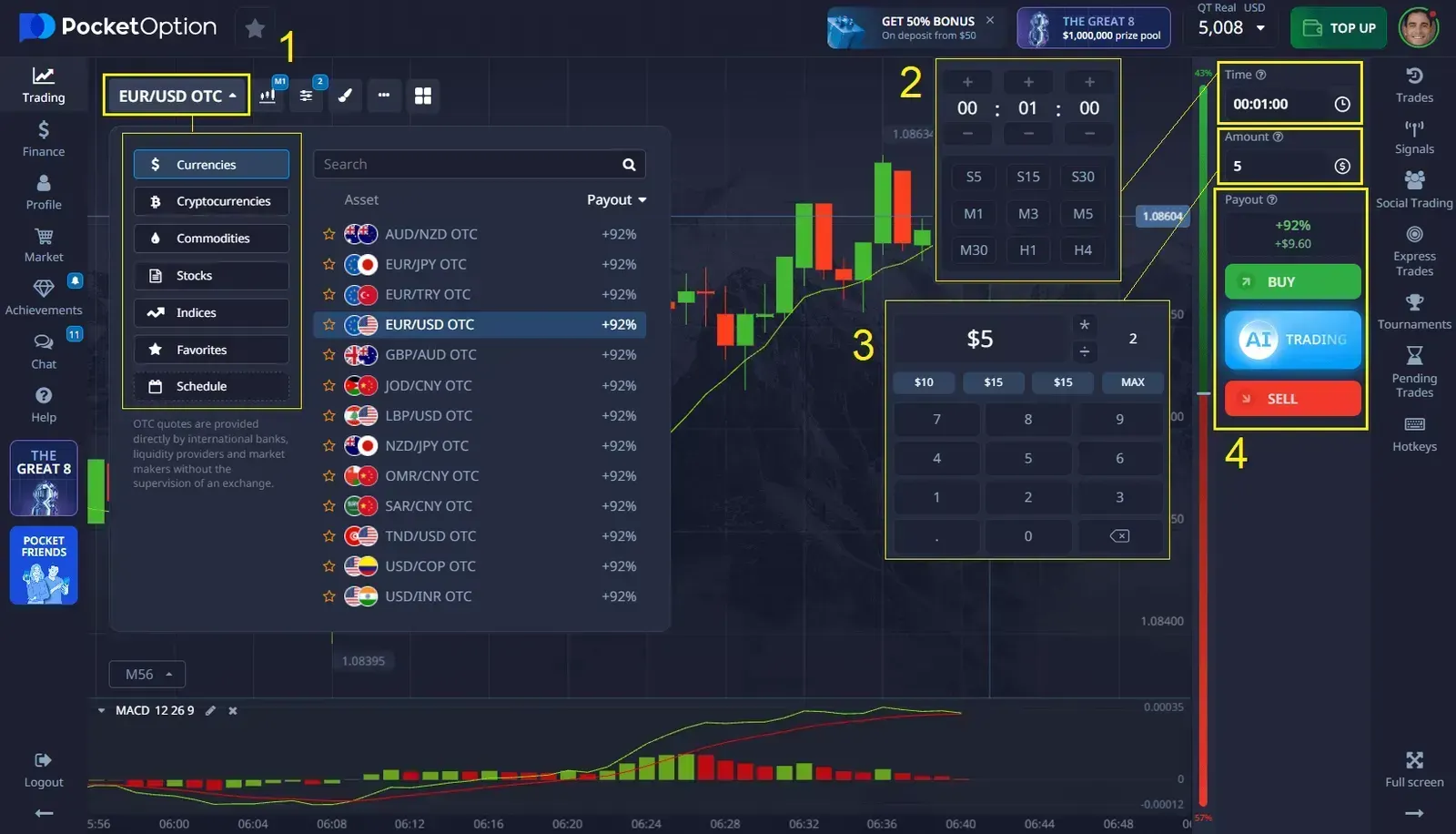
Giao dịch Express: Mục tiêu khác, vẫn nhanh
Pocket Option cũng cung cấp Giao dịch Express, với:
- Kết hợp nhiều giao dịch thành một
- Tăng tiền thưởng tiềm năng nếu tất cả dự đoán đều chính xác
- Tập trung vào việc xếp chồng chiến lược, không phải tốc độ
✔️ Không giống như HFT, Giao dịch Express không liên quan đến việc thực hiện nhanh — nó liên quan đến việc tối đa hóa lợi nhuận thông qua các kết hợp chiến lược.
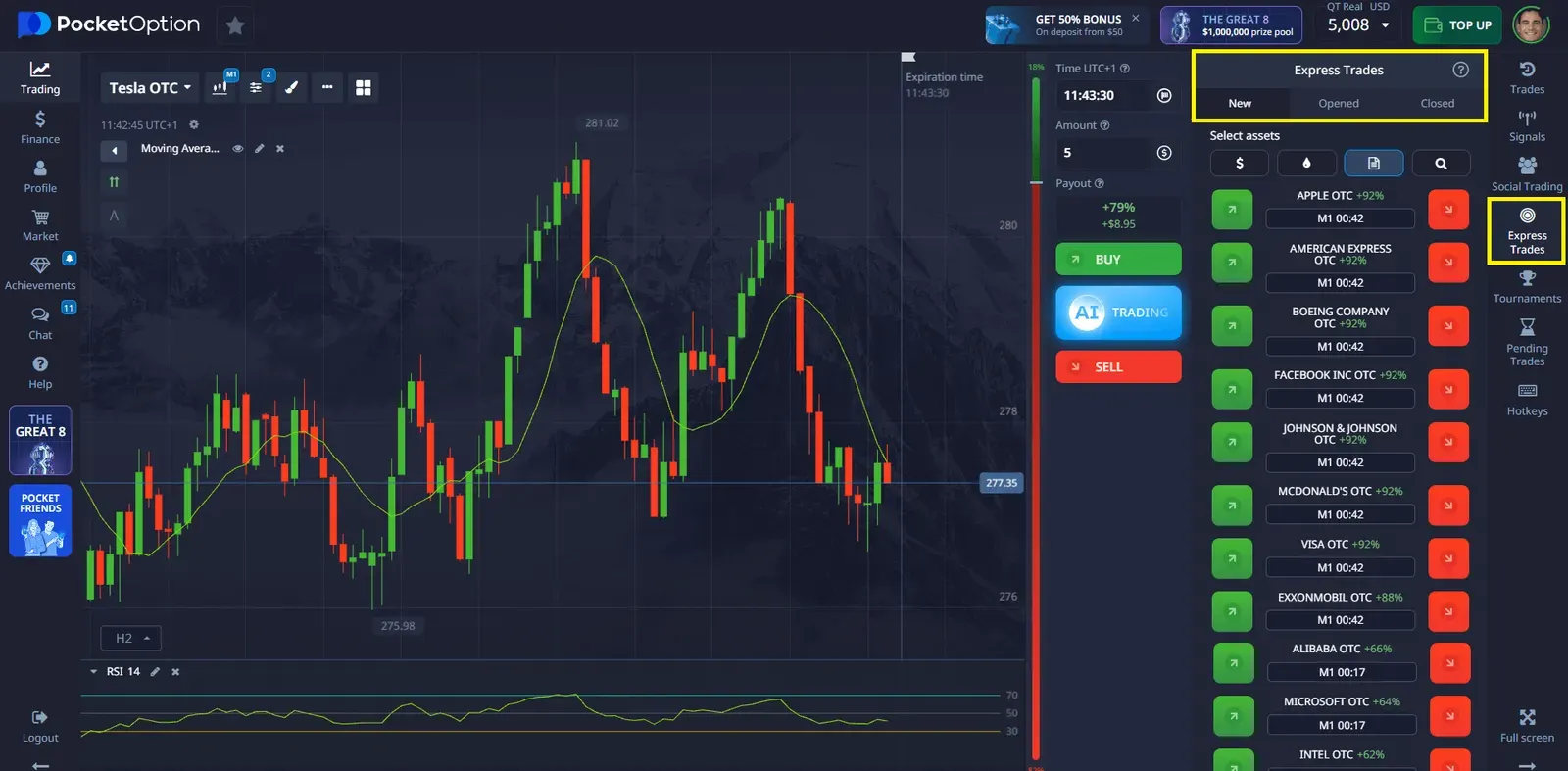
Các chiến lược điển hình lấy cảm hứng từ HFT (Được điều chỉnh cho Pocket Option)
Bạn có thể thử nghiệm với các phiên bản đơn giản hóa của các chiến lược HFT phổ biến:
- Scalping — nhiều giao dịch với mục tiêu lợi nhuận nhỏ
- Theo dõi xu hướng — phản ứng nhanh với động lực giá
- Tạo lập thị trường — đặt lệnh mua/bán xung quanh giá hiện tại
- Chênh lệch giá — khai thác sự chênh lệch giá giữa các nền tảng (thủ công)
- Chênh lệch giá thống kê — sử dụng mẫu và mối tương quan tài sản
- Giao dịch dựa trên tin tức — phản ứng nhanh với các thông báo kinh tế ⚠️
Lưu ý: Những chiến lược này sẽ không hoạt động giống như trên các nền tảng tổ chức, nhưng có thể giúp bạn xây dựng tốc độ và kỷ luật.
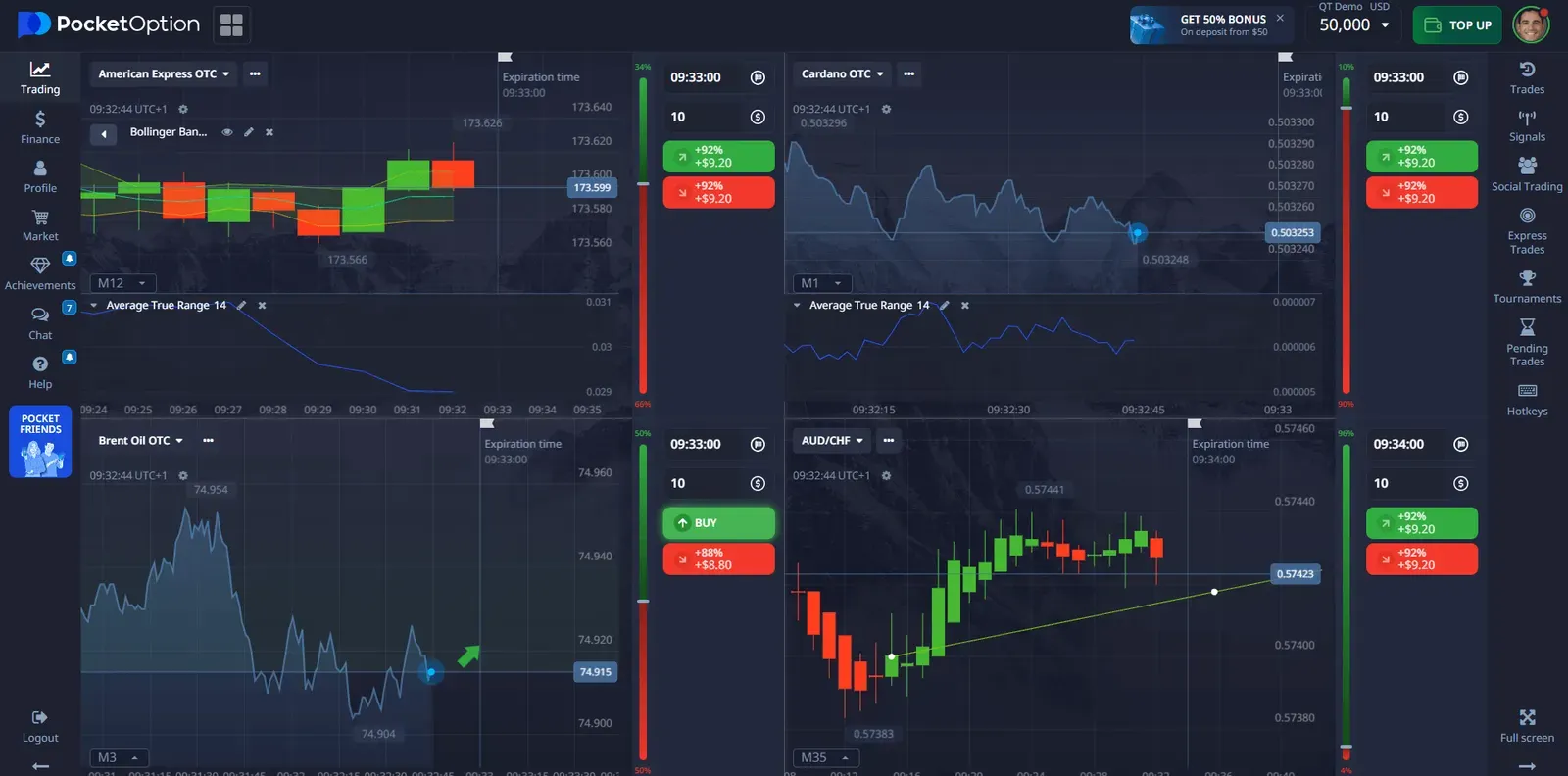
Bảng: HFT vs Chiến lược nhanh của Pocket Option
| Tính năng | HFT thực sự | Pocket Option |
|---|---|---|
| Thời gian thực hiện | Micro giây | Giây |
| Công cụ sử dụng | Thuật toán tùy chỉnh, API | Giao dịch Nhanh & Express |
| Đối tượng mục tiêu | Tổ chức | Nhà giao dịch nhỏ lẻ |
| Phần cứng cần thiết | Đặt cùng vị trí, máy chủ | Thiết bị tiêu chuẩn |
| Đầu tư tối thiểu | $100.000+ | Từ $5 |
Tài nguyên giáo dục trên Pocket Option
Pocket Option bao gồm một phần học tập mạnh mẽ:
- Hướng dẫn video về Giao dịch Nhanh và các chỉ báo
- Hướng dẫn cho Giao dịch và kiến thức cơ bản về forex
- Tổng quan về chiến lược và giới thiệu về nền tảng
Lý tưởng cho cả người mới bắt đầu và người dùng có kinh nghiệm đang thử nghiệm các phương pháp mới.
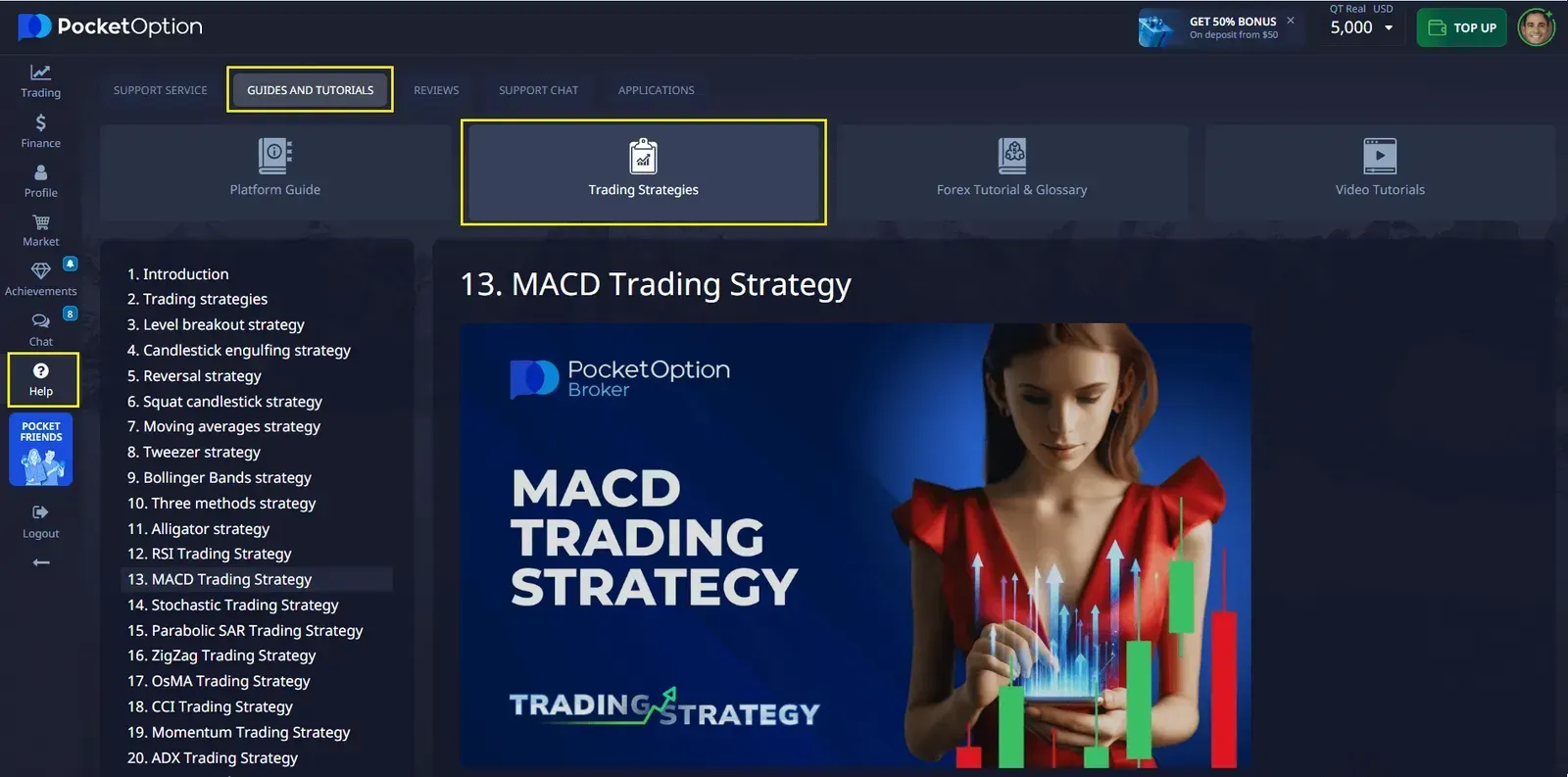
Cách bắt đầu với chiến lược nhanh
- Mở một tài khoản
- Thử Giao dịch Nhanh từ khoảng thời gian 5 giây
- Chọn một chiến lược (scalping, theo dõi xu hướng, v.v.)
- Kiểm tra nó trong ít nhất một tuần — theo dõi kết quả
- Chuyển sang giao dịch thực với số tiền nhỏ
Kiểm tra chiến lược với tài khoản demo $50K hoặc bắt đầu giao dịch thực từ $5 — nhanh chóng và dễ dàng!
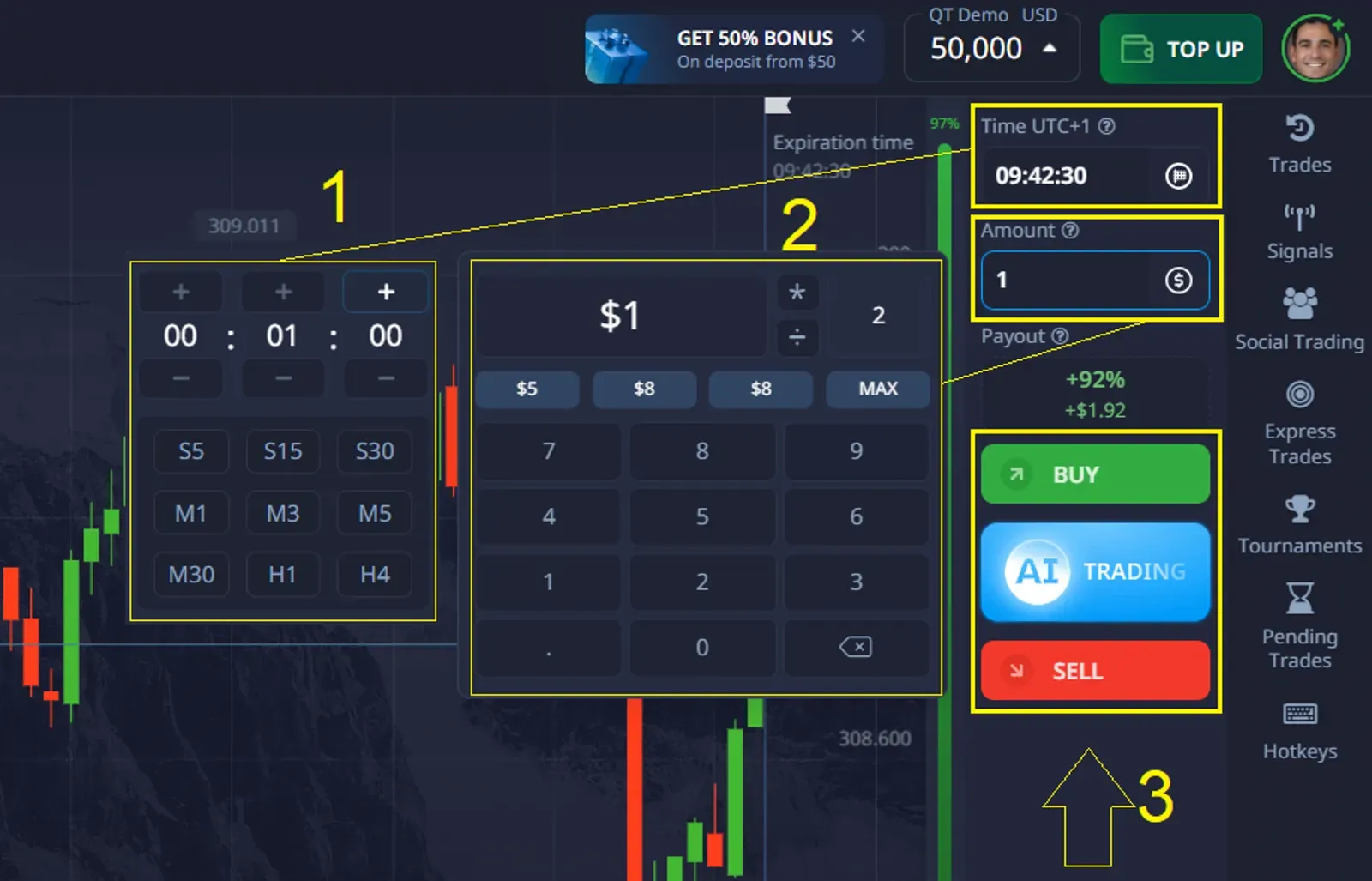
Suy nghĩ cuối cùng
Pocket Option không hỗ trợ HFT thực sự — và điều đó không sao. Những gì nó cung cấp là tốc độ và công cụ để bạn khám phá các chiến lược kiểu HFT trong môi trường bán lẻ. Giao dịch Nhanh cho bạn cơ hội thực hành ra quyết định nhanh và kiểm soát rủi ro chặt chẽ. Giao dịch Express thêm một lớp chiến lược liên quan đến sự kết hợp, không chỉ là tốc độ.
Với kế hoạch rõ ràng, kỳ vọng thực tế và quản lý rủi ro mạnh mẽ, bạn có thể sử dụng Pocket Option để phát triển các chiến lược nhanh hơn phù hợp với phong cách và nhịp độ của bạn — mà không cần ngân sách của một quỹ đầu tư phòng hộ
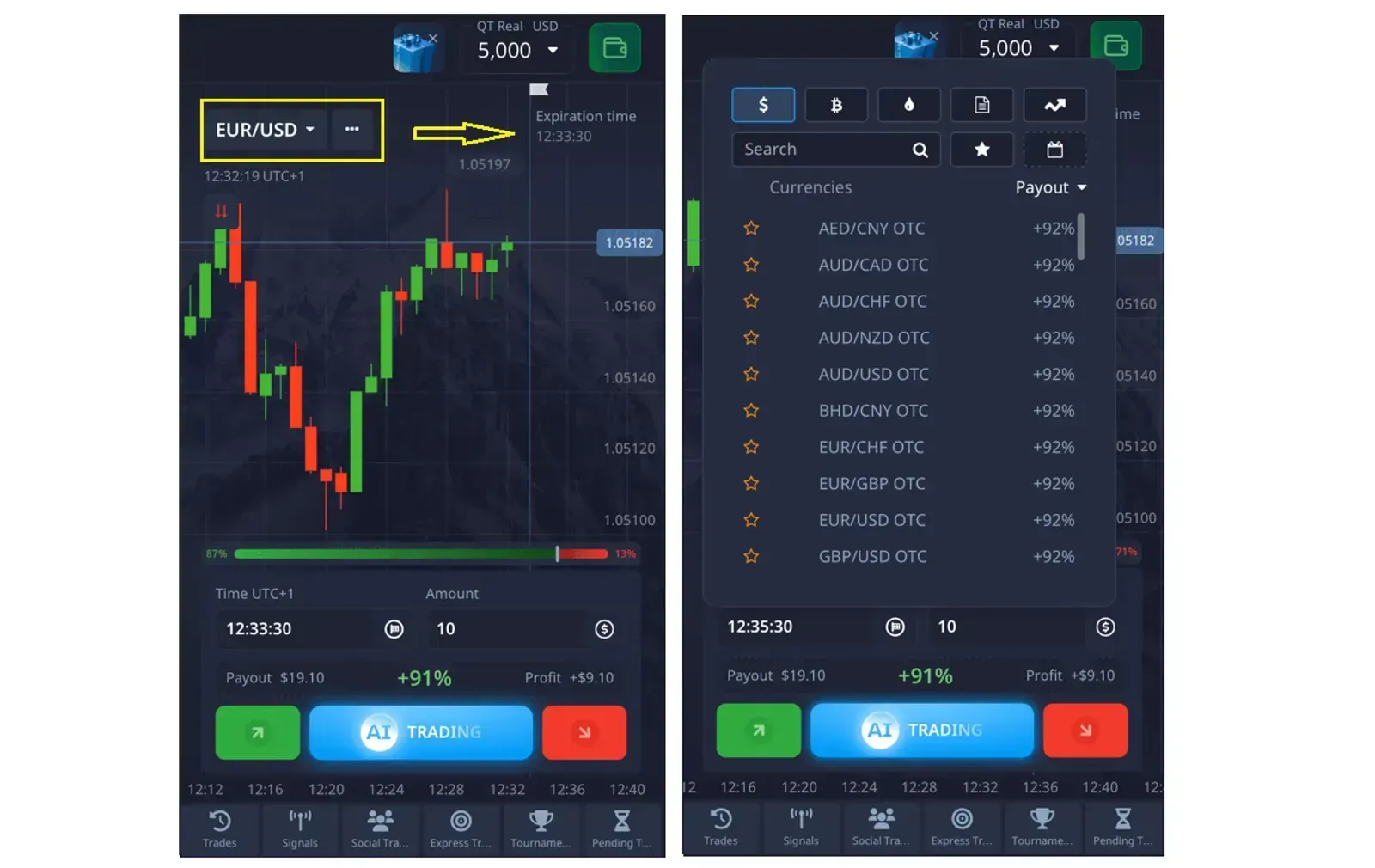
FAQ
Pocket Option có cung cấp HFT thực sự không?
Không -- nó không cung cấp công cụ thuật toán hoặc cấp độ tổ chức. Nhưng các chiến lược nhanh có thể được kiểm tra thủ công.
Tính năng nào tốt nhất cho giao dịch nhanh?
Quick Trading được thiết kế cho khung thời gian ngắn (giây đến phút) và là sự phù hợp nhất.
Express Trading có hữu ích cho giao dịch kiểu HFT không?
Không trực tiếp -- nó tập trung vào việc xếp chồng giao dịch, không phải tốc độ. Nhưng nó hữu ích cho các kết hợp chiến lược.
Tôi có thể học các chiến lược này trên Pocket Option không?
Có -- có một phần giáo dục đầy đủ với các bài học video và hướng dẫn.
Rủi ro lớn nhất trong giao dịch nhanh là gì?
Quyết định nhanh = sai lầm nhanh. Kiểm tra kỹ lưỡng và giới hạn kích thước giao dịch để quản lý rủi ro.